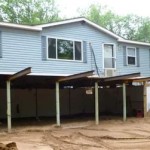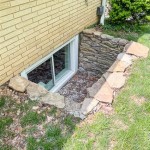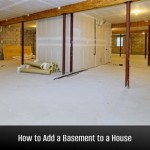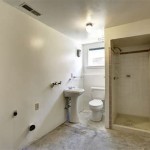What Is The Ideal Humidity In A Basement?
Maintaining optimal humidity levels in a basement is crucial for preventing a range of problems, from mold growth to structural damage. The basement environment, often naturally cooler and more prone to moisture accumulation than other parts of a home, requires specific attention to ensure a healthy and comfortable living space. Understanding the ideal humidity range, the factors that influence it, and the methods for achieving and maintaining it are essential for all homeowners. This article delves into the specifics of ideal basement humidity, exploring its significance and the strategies for controlling it effectively.
Understanding Relative Humidity
Relative humidity (RH) is the percentage of water vapor present in the air compared to the maximum amount of water vapor the air can hold at a given temperature. Warm air can hold more moisture than cold air; therefore, RH fluctuates with temperature. A reading of 50% RH means the air contains half the moisture it can potentially hold at that temperature. In the context of basements, controlling RH is the primary goal when managing humidity levels.
For most indoor environments, including basements, the ideal relative humidity falls within the range of 30% to 50%. This range is considered safe and comfortable for most people and helps prevent the growth of mold and mildew, as well as the proliferation of dust mites. When humidity levels exceed 60%, the risk of these issues increases significantly. Conversely, humidity levels below 30% can lead to dry skin, respiratory irritation, and damage to wooden furniture.
Measuring relative humidity is straightforward, using a device called a hygrometer (also known as a humidity meter). These devices are readily available at hardware stores and online retailers. Both digital and analog hygrometers are effective, although digital versions often offer greater accuracy and additional features such as temperature readings and historical data tracking.
Factors Influencing Basement Humidity
Several factors contribute to increased humidity in basements, making them particularly susceptible to moisture problems:
Groundwater Seepage: Basements are often partially or fully underground, making them vulnerable to moisture seeping through the foundation walls and floors. This can occur due to hydrostatic pressure from groundwater or poor drainage around the foundation. Cracks in the foundation, even hairline fractures, can provide pathways for water intrusion.
Condensation: In the warmer months, warm, humid outdoor air can enter the basement and condense on cool surfaces like concrete walls and floors. This condensation creates a damp environment conducive to mold growth. Improperly insulated pipes carrying cold water can also contribute to condensation.
Air Leaks: Air leaks around windows, doors, and other openings allow humid outdoor air to enter the basement. These leaks can also introduce rainwater and snowmelt.
Poor Ventilation: Basements often have limited ventilation, which prevents the natural circulation of air and the removal of excess moisture. This lack of airflow traps humidity, creating a stagnant environment.
Household Activities: Even everyday activities within the house can contribute to basement humidity. For instance, showering, cooking, and laundry can release significant amounts of moisture into the air, which can then migrate to the basement.
Drying Clothes: If clothes are dried in the basement, the evaporation of water adds significantly to the humidity level. This is particularly problematic if ventilation is poor.
Methods for Controlling Basement Humidity
Effective humidity control in basements requires a multi-faceted approach, addressing the various sources of moisture and implementing strategies to maintain the ideal RH range. Several methods can be employed, either individually or in combination, depending on the specific circumstances of the basement.
Dehumidifiers: A dehumidifier is the most common and often the most effective solution for controlling humidity in basements. These appliances work by drawing in air, removing moisture through condensation, and then releasing the drier air back into the room. Dehumidifiers are available in various sizes and capacities, so selecting the right one for a specific basement size is crucial. The capacity of a dehumidifier is measured in pints of water removed per day. For a moderately damp basement, a dehumidifier with a 30-50 pint capacity may be sufficient, while a very damp basement may require a larger unit with a 70-pint capacity or higher. Regularly emptying the water collection tank is essential, or connecting the dehumidifier to a drain line for continuous operation is an alternative.
Improving Ventilation: Enhancing ventilation can help to remove moist air and promote air circulation. This can be achieved by opening windows (when outdoor humidity is low), installing exhaust fans, or using a whole-house ventilation system. Ensure that vents are not obstructed and that they are properly positioned to facilitate airflow. In some cases, simply opening a basement window for a few hours each day can make a noticeable difference.
Sealing Air Leaks: Identifying and sealing air leaks can prevent humid outdoor air from entering the basement. This involves caulking around windows and doors, sealing cracks in the foundation, and insulating pipes. Expanding foam can be used to fill larger gaps and cracks. Pay particular attention to areas where pipes and wires enter the basement, as these are common entry points for air leaks.
Improving Drainage: Ensuring proper drainage around the foundation is essential for preventing groundwater seepage. This involves grading the soil away from the foundation, cleaning gutters and downspouts, and extending downspouts away from the house. Installing a French drain, which is a perforated pipe surrounded by gravel, can help to divert groundwater away from the foundation.
Waterproofing: In cases of severe water intrusion, professional waterproofing may be necessary. This can involve applying a waterproof coating to the interior or exterior of the foundation walls, installing a drainage system, or even excavating the foundation to address exterior drainage issues. Waterproofing is a significant investment but can provide a long-term solution to basement moisture problems.
Insulation: Insulating basement walls and floors can help to reduce condensation by keeping surfaces warmer. This prevents humid air from condensing on cold surfaces. Rigid foam insulation is a common choice for basement walls, as it is resistant to moisture and mold growth. Proper insulation also helps to improve energy efficiency by reducing heat loss in the winter and heat gain in the summer.
Addressing Plumbing Leaks: Promptly addressing any plumbing leaks, whether from pipes, fixtures, or appliances, is crucial for preventing excess moisture in the basement. Regularly inspect pipes and fixtures for leaks, and repair them as soon as possible. Even small leaks can contribute to significant humidity problems over time.
Using Vapor Barriers: A vapor barrier is a material that prevents moisture from passing through it. Installing a vapor barrier on the warm side of the insulation (typically the interior side of the basement walls) can help to prevent moisture from migrating into the wall cavity and condensing. Polyethylene plastic sheeting is a common type of vapor barrier. However, it is essential to ensure that the vapor barrier is properly installed to prevent trapping moisture within the wall.
Choosing Moisture-Resistant Materials: When finishing a basement, select materials that are resistant to moisture and mold growth. This includes using mold-resistant drywall, waterproof flooring, and non-organic insulation materials. Avoid using materials that are prone to absorbing moisture, such as carpet and wood paneling, unless adequate moisture control measures are in place.
Monitoring and Maintenance
Once humidity control measures are implemented, it is essential to monitor the basement's humidity levels regularly using a hygrometer. This allows for adjustments to be made as needed to maintain the ideal RH range. Regularly inspect the basement for signs of moisture, such as water stains, mold growth, or a musty odor. Cleaning any mold or mildew promptly is essential to prevent further growth and potential health problems. Additionally, regularly inspect and maintain drainage systems, dehumidifiers, and ventilation systems to ensure they are functioning properly.
Maintaining the proper humidity level in a basement is an ongoing process that requires vigilance and proactive measures. By understanding the factors that contribute to basement humidity and implementing effective control strategies, homeowners can create a healthier, more comfortable living space and protect their homes from the damaging effects of excess moisture.

What Is The Ideal Basement Humidity Level Epp Foundation Repair

Basement Humidity Levels Variations Impacts And Controling

A Guide To Controlling Nc Home Humidity Newcomb And Company

Relative Humidity Chart For Ideal In The House

Managing Ideal Indoor Humidity Levels All Year Round

How To Lower Your Basement S Humidity Level

The Perfect Basement Humidity Level Tips To Prevent Moisture

What Should Humidity Be In A Crawl Space Nia

5 Effective Tips To Reduce Humidity In Your Basement News And Events For Thrasher Foundation Repair

What Is The Ideal Basement Humidity Level Epp Foundation Repair
Related Posts







